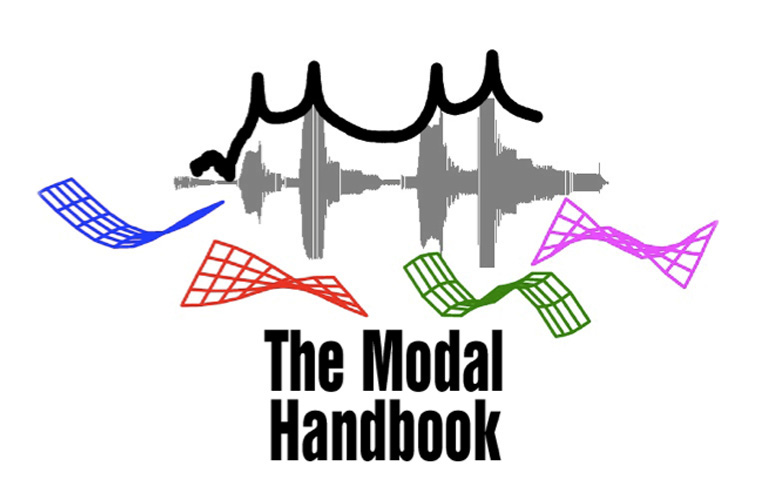Main Menu
- Home
- Product Finder
- Calibration Systems
- Calibration Services
- Digital Sensing
- Industrial Vibration Calibration
- Modal and Vibration Testing
- Non-Destructive Testing
- Sound & Vibration Rental Program
- Learn
- About Us
- Contact Us
 Experimental modal
analysis software and data acquisition hardware have been available for several decades now. Several theoretical textbooks can be found which address some of the practical issues and a variety of seminars are available, all of which help the novice
and even seasoned modal practitioner understand the implications of modal theory as it applies to data acquisition of FRF data and extraction of modal parameters to develop a modal model. However, even today a good modal test/analysis reference guide
does not exist; pieces of information are scattered in a variety of different sources which often are difficult to find - until now! A new multimedia CD format package now exists - The Modal Handbook
Experimental modal
analysis software and data acquisition hardware have been available for several decades now. Several theoretical textbooks can be found which address some of the practical issues and a variety of seminars are available, all of which help the novice
and even seasoned modal practitioner understand the implications of modal theory as it applies to data acquisition of FRF data and extraction of modal parameters to develop a modal model. However, even today a good modal test/analysis reference guide
does not exist; pieces of information are scattered in a variety of different sources which often are difficult to find - until now! A new multimedia CD format package now exists - The Modal Handbook
This easy to use multimedia package brings all the important issues of experimental modal testing to a very simple level of explanation and understanding. A very simple user interface allows the modal test engineer/technician to quickly access information pertinent to running modal tests. By using either pull down menus, hot spots or buttons on the screen, navigation to pertinent information is a mouse click away. Very simple, easy to understand pictures are used to explain complex theoretical concepts to take away the mystery of modal analysis and allow just about anyone to understand modal analysis and testing /extraction procedures. There are no detailed, lengthy theoretical developments to cloud or confuse the issues - just simple straightforward explanations.
This multimedia format presentation starts with some very simple overviews of what modal analysis is all about followed by some very practical information regarding modal testing such as
These are the main items addressed for practical testing considerations. In addition to his set of guidelines, the background information to support modal testing is also available.
All the important items regarding modal analysis is contained in this presentation
The material in this multimedia format presentation is intended to augment the modal test engineer/technician’s knowledge and understanding in performing routine modal tests. Practical issues are addressed rather than developing detailed theoretical equations. The main goal is to quickly answer often asked questions concerning routine tasks raised by the majority of occasional modal testers such as
to name just a few typical questions.
These types of questions are addressed in this multimedia format presentation and provide great insight into understanding modal analysis as a tool to solve problems. This is just a short description of the material that is contained on the CD.
This multimedia format presentation was developed by Peter Avitabile, President of Dynamic Decisions. Pete has spent over 20 years working in this area. He has lectured at over 75 live modal analysis seminar presentations over the past 10 years and has written over 50 technical papers in the modal analysis area. This extensive knowledge and experience is packaged here in an extremely useful, yet easy to use format. This multimedia format material is designed for use on Windows® systems.